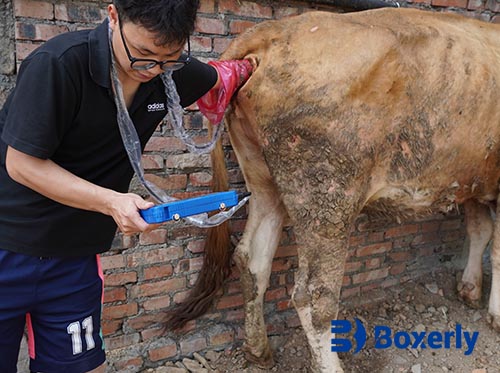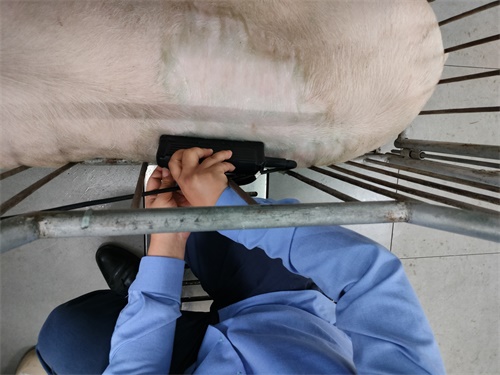As a livestock farmer, I’ve come to understand that no two animals—and no two veterinary diagnoses—are ever exactly the same. Sometimes, my veterinarian might suggest an ultrasound, even though it’s not the first tool used in a diagnostic process. At first, I wondered why this more advanced test was recommended. But after experiencing how ultrasound reveals critical internal details, I now understand its importance. It’s not just about diagnosing diseases—ultrasound helps us avoid guessing games and leads to faster, more effective treatment.

The Diagnostic Journey: From Basic to Advanced
Every diagnosis begins with the basics: observation, palpation, and perhaps a blood test or X-ray. These are standard procedures, and they help rule out the most common issues. But what if the problem isn’t on the surface or isn’t easily visible? That’s when my vet might turn to ultrasound as the next step. It’s not the first test, but it often becomes the most important one when initial findings aren’t conclusive.
Ultrasound offers real-time, detailed views of organs and tissues inside the animal’s body. If your vet recommends one, it’s because they need more information—and ultrasound is one of the best tools available to get it.
Understanding How Ultrasound Works in Veterinary Care
Ultrasonography is one of the most widely used imaging techniques in veterinary medicine after radiography. It operates by emitting high-frequency sound waves (typically 1.5 ถึง 18 MHz) through a device called a transducer. When these waves hit tissues or organs, they bounce back as echoes. A computer processes these echoes and turns them into images, showing us what’s happening inside the body.
The most common ultrasound display is B-mode grayscale scanning, which creates two-dimensional images of the animal’s internal structures. The process is non-invasive and usually painless. A special gel is applied to the animal’s skin to help the sound waves travel effectively. The probe is moved across the area of interest, producing real-time images that the vet can analyze on the spot.

Why Ultrasound Isn’t Always the First Test
From my experience, veterinarians reserve ultrasound for when they need more clarity. เช่น, if a blood test shows liver enzyme abnormalities, the vet might recommend an ultrasound to visually examine the liver for masses, inflammation, or bile duct issues. Ultrasound isn’t used casually—it’s a focused test for deeper, more detailed exploration.
Also, it’s particularly useful when other tests fall short. X-rays can’t always show soft tissue abnormalities well. Blood tests can suggest that something is wrong, but they can’t pinpoint where or what the problem is. That’s where ultrasound fills in the blanks.
Common Reasons Vets Recommend Ultrasound
On my farm, ultrasound has been used for a variety of reasons:
-
Pregnancy detection and monitoring: Especially important in breeding programs for cows and mares.
-
Organ evaluation: Liver, kidney, spleen, and pancreas can all be examined in detail.
-
Heart assessment: Echocardiography uses ultrasound to evaluate heart chambers, valves, and overall function.
-
Injury diagnosis: For soft tissue injuries in muscles and tendons, especially in working animals like horses.
-
Guided biopsies or fluid sampling: When abnormal tissues or fluids are found, ultrasound can guide the needle for safer sampling.
The key advantage is that ultrasound gives real-time insight, which means vets can make immediate decisions and avoid unnecessary procedures.

Ultrasound in Large Animals
In large animals like cattle and horses, ultrasound is especially valuable. It’s often used transrectally for reproductive examinations—checking uterine health or confirming early pregnancies. On my cattle farm, it’s also helpful for monitoring fetal development and detecting ovarian cysts or uterine infections.
For horses, it’s commonly used to assess tendon injuries or joint conditions. Unlike X-rays, which are better for viewing bones, ultrasound shows what’s happening in soft tissues—ligaments, muscles, and even cartilage. This kind of insight helps guide rest periods or determine when an animal can return to work.
What the Images Show—and Don’t Show
Ultrasound can show changes in organ size, shape, and texture. Diseased organs often look different from healthy ones—they might appear brighter, darker, or uneven in texture. But not all abnormalities are obvious. That’s why the skill of the operator matters so much. A trained vet can distinguish between normal variations and actual problems.
It’s also worth noting that while ultrasound is excellent for soft tissues, it doesn’t work as well for imaging bones or gas-filled organs like the lungs or intestines. That’s due to how sound waves reflect differently off gas and dense tissue.
When Ultrasound Findings Are Inconclusive
There have been times when an ultrasound didn’t clearly confirm what my vet suspected. เช่น, conditions like chronic pancreatitis may not always show up clearly on the scan. Or, a perfectly normal-looking adrenal gland might still be overproducing hormones due to a pituitary tumor. ในกรณีเช่นนี้, the vet will combine ultrasound findings with other tests, such as hormone assays or CT scans, to reach a full diagnosis.
Still, even when ultrasound doesn’t provide all the answers, it often helps narrow down the possibilities.

Advances in Technology Make a Difference
Over the years, I’ve seen how advances in ultrasound equipment have made it easier to detect subtle changes inside the body. Newer machines offer clearer images, deeper penetration, and even 3D or Doppler imaging.
อัลตราซาวนด์ Doppler, for instance, allows the vet to see the direction and speed of blood flow. This is particularly helpful in diagnosing heart valve issues, blocked vessels, or abnormal blood patterns in tumors.
ในบางกรณี, 3D imaging has helped with surgical planning or determining the precise size and location of a lesion. That means fewer surprises during surgery and better outcomes for the animals.
Final Thoughts: Ultrasound is a Tool, Not a Guess
So, why does my vet recommend an ultrasound? Because it’s often the safest, most informative, and least invasive way to get a closer look at what’s going on inside an animal. Whether it’s confirming a pregnancy, evaluating a suspicious organ, or guiding a biopsy, ultrasound takes the guesswork out of veterinary care.
And for us farmers, that means faster diagnoses, fewer complications, and healthier animals. I’ve learned to trust the process—if my vet says we need an ultrasound, there’s usually a good reason. It’s not about doing more tests. It’s about doing the right test at the right time.